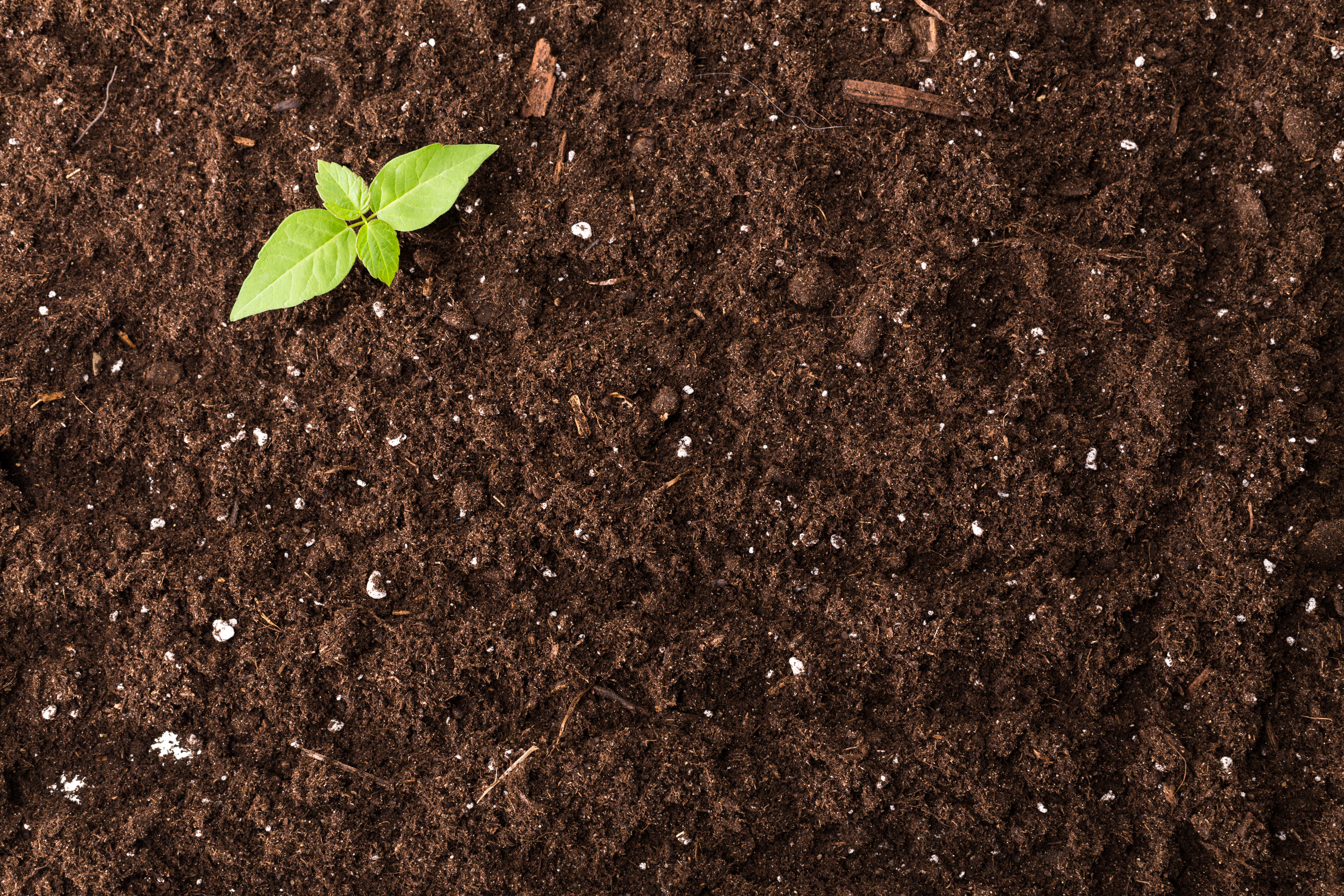Soil is the foundation of all life on earth. With some sunlight, air, and water, soil will burst with life. Our food grows from the soil, and soil cleans our water and our air. Healthy soils are vital for people and nature to thrive, but they can become a major problem when damaged.
Soil is a sponge.
Did you know soil acts like a giant sponge when it rains, drinking up water between its particles? Clay soils have small particles with small spaces and absorb water slowly. Sand, on the other hand, lets water flow between the big grains quickly. When pieces of dead leaves and branches (or other organic matter) sit on top of the soil, rainwater will dissolve the nutrients from the decaying mulch. The water and dissolved nutrients are then held in the soil, available for plants to use over time, as needed.
Healthy soils with a variety of particle sizes can help regulate the water table to reduce the impact of floods and drought. Their sponge-like quality means they can store excess water during wet weather and slowly release water in dry seasons. By holding moisture, healthy soils also regulate temperature. They do this by staying warm for a while when cold air moves in, then cooling the air when hot days arrive.
Soil moves and shifts.
Unfortunately, the soil’s surface constantly loses pieces or gets stepped on. At every construction site, dirt road, tilled field, and lakeshore, soil comes into direct contact with the powerful forces of rain, wind, and compaction. Without vegetation and mulch to protect it, soil gets washed away a particle at a time in a process called erosion and, at the same time, gets pushed down by every tire or boot that rolls over it. Some erosion happens naturally and gradually, but human activities tend to bring it on much faster and over more area. Most soils can respond to light, intermittent compaction, but frequent traffic can damage soil’s ability to absorb and hold water.
Farmers, construction workers, loggers, and others who follow guidelines and best practices can help to slow or prevent erosion and compaction. But the best way to prevent erosion and compaction is to choose not to build, farm, or log near water or on steep slopes and loose soils.
Moving soil is bad for water.
When eroded soil gets into a body of water like a stream or river, the soil that had helped regulate the water now poisons it instead. Eroded soil, called sediment, is the most common pollutant in fresh water. Plants growing around streams and rivers can catch some, but not all, sediment before it gets in the water.
But how bad can dirt really be for water?
For one thing, fish breathe through gills, and sediment can clog them. Sediment can also have the following negative impacts:
- block sunlight from reaching aquatic plants
- alter the flow of water by depositing on stream and river bottoms and banks
- kill bivalves like mussels and oysters, preventing them from cleaning waterways
- carry extra nutrients that can hurt the aquatic ecosystem and cause algal blooms
Most of our rivers should be clean and clear, but they appear murky and muddy thanks to erosion and sediment. Efforts to reduce erosion and trap sediment are expensive, but they can help to keep our rivers healthy.
Healthy soil is alive.
Soil has tons—typically, at least ten tons per acre—of organic material in the form of decomposing plants and the fungi and bacteria that eat them. The web of micro-life under the Earth’s surface is critical to the soil’s ability to sustain life and provide nutrients. This web gets all of its food (carbon) from plants. The fungi grow bigger and hold the soil together, increasing its capacity to hold nutrients. Bacteria break down those nutrients to make them usable. Plants feed energy to the soil system, and the soil gives nutrients back to the plants.
Some farmers have started to feed and grow their soils by planting cover crops in winter and practicing no-till agriculture. These practices are both old-fashioned and new technology, and figuring out how to make a living on this kind of farm can be an additional challenge on top of the difficulties of modern agriculture.
How can you celebrate and protect soils?
If you’re feeling excited about soils, get engaged! Watch the Living Soil Film to learn more about soils and no-till agriculture. Then, visit a nearby farm or forest and look at the soils. Are they mostly clay, sand, or loam? Protect your soils by leaving vegetation in place, especially on steep slopes and near creeks and streams.
If you want to learn more about your soils, like what kind of nutrients are in them and if they’re acidic or basic (alkaline), you can get your soil tested for $15-$70 by mailing or delivering a sample to the University of Tennessee Extension Office.

